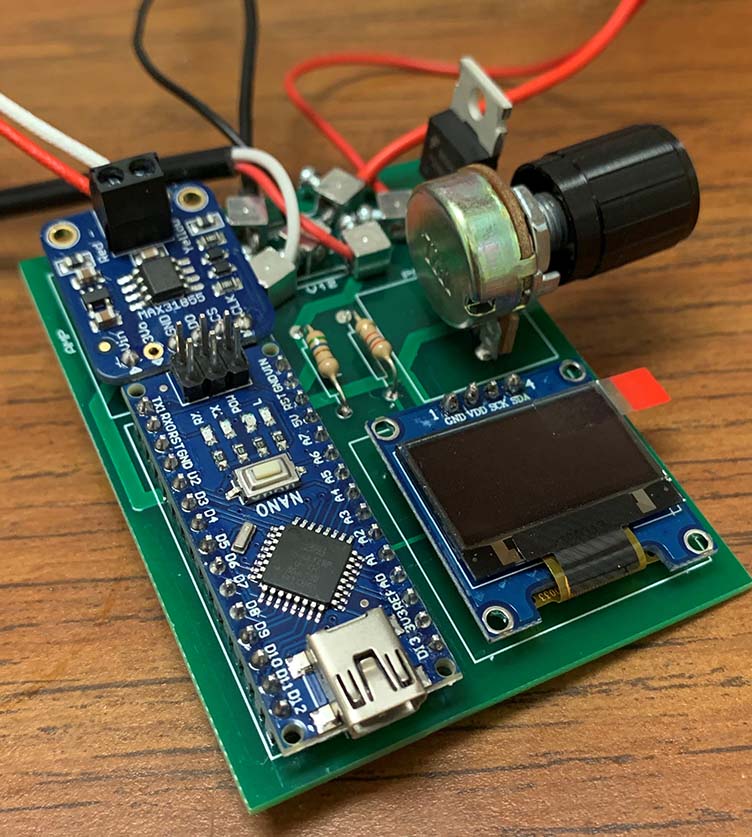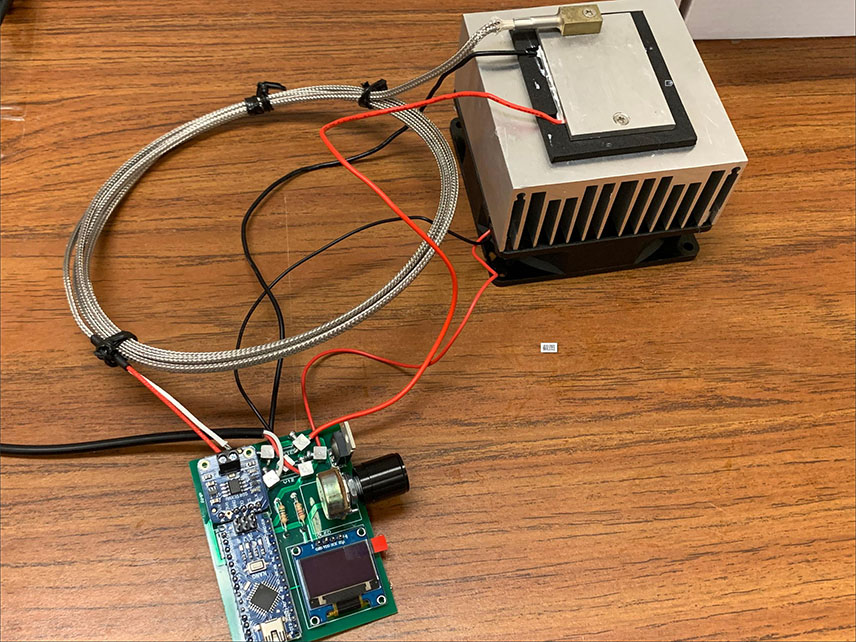A feedback control system was developed to maintain the temperature of a metal holding rig at a sufficiently low level to anesthetize flies for surgeries, such as opening the head or the back, under a microscope.
Related Skills:

Control Components

Top to Bottom Configuration: Thermocouple Sensor, Peltier Plate, (Thermal Paste), Heat Sink, and Cooling Fan
Maintaining flies at a temperature around the ice point is a well-known practice to anesthetize them with minimal side effects. A Peltier plate is used to cool the metal rig that holds the fly. According to the Peltier effect, heat is transferred from one side of the Peltier plate to the other when current passes through it. However, if the heat from the hot side is not dissipated promptly, the heat will be transferred back to the cold side due to the second law of thermodynamics. A heat sink with a fan is thus used to help dissipate the heat from the hot side.
A thermocouple is used to monitor the temperature of the metal rig. Its readout is amplified and read via an Arduino Nano's analog input. Simultaneously, a potentiometer is used as a voltage divider to provide variable voltage inputs to the Arduino Nano analog input, which can be converted to a target temperature with code. The Arduino Nano compares the temperature of the metal rig with the target temperature and cuts the Peltier plate's current supply via an N-type MOSFET if the rig's temperature is below the target temperature. Finally, a display is added to show the current temperature of the rig and the current target temperature. A PCB is designed to integrate all the components.
This project is inspired by a similar project. The original project used a commercially available temperature controller, while I built the temperature controller at a much lower monetary cost.
